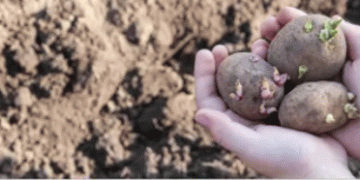Agriculture is at a crossroads, grappling with pressing issues such as soil degradation, water scarcity, and unpredictable weather patterns. According to the Food and Agriculture Organization (FAO), global food production must increase by 70% by 2050 to meet the demands of a projected population of 9.7 billion people. In this context, the role of innovation—encompassing technology, practices, and strategies—becomes paramount. This article delves into the latest trends and developments shaping the future of agriculture.
Advancements in Agricultural Technology
The adoption of precision agriculture is revolutionizing farming practices. By utilizing GPS technology, IoT sensors, and drones, farmers can monitor crop health, optimize resource usage, and increase yields. A recent report from MarketsandMarkets predicts that the global precision farming market will grow from $7 billion in 2021 to over $12 billion by 2026, indicating a robust shift towards data-driven farming practices.
Furthermore, advancements in robotics and automation are transforming labor-intensive processes. For instance, autonomous tractors and robotic harvesters can operate around the clock, reducing labor costs and increasing efficiency. The National Institute of Food and Agriculture (NIFA) has funded projects aimed at developing these technologies, which are essential for maintaining productivity in the face of a declining agricultural workforce.
The Role of Biotechnology
Biotechnology plays a crucial role in enhancing crop resilience and improving food security. Genetically modified organisms (GMOs) have been instrumental in developing crops that withstand pests, diseases, and adverse weather conditions. According to the International Service for the Acquisition of Agri-Biotech Applications (ISAAA), over 190 million hectares of GMO crops were cultivated globally in 2020, demonstrating their increasing acceptance and importance.
In addition to GMOs, CRISPR gene-editing technology is emerging as a game-changer. This method allows for precise modifications in plant genomes, enabling the development of crops with enhanced nutritional profiles and stress resistance. Research published in Nature Biotechnology indicates that CRISPR could contribute to food security by increasing crop yields by up to 30% in certain scenarios.
Sustainable Practices for the Future
The shift towards sustainability is not just a trend; it is a necessity. Farmers are increasingly adopting regenerative agriculture practices, which focus on rebuilding soil health, enhancing biodiversity, and improving ecosystem resilience. According to a report by the Rodale Institute, regenerative practices can sequester significant amounts of carbon in the soil, helping mitigate climate change while enhancing productivity.
Additionally, water management is becoming a priority. Techniques such as rainwater harvesting, drip irrigation, and the use of soil moisture sensors can lead to substantial water savings. The World Bank estimates that improving water management could boost agricultural productivity by 20-30% in arid regions.
Embracing Innovation for a Resilient Future
As the challenges facing agriculture intensify, embracing innovation becomes crucial for farmers, agronomists, and agricultural engineers. By leveraging advancements in technology, biotechnology, and sustainable practices, the agricultural sector can adapt to changing conditions and continue to provide for a growing global population. Collaboration among stakeholders, investment in research, and the adoption of best practices will be vital in shaping a resilient and sustainable agricultural future.
































